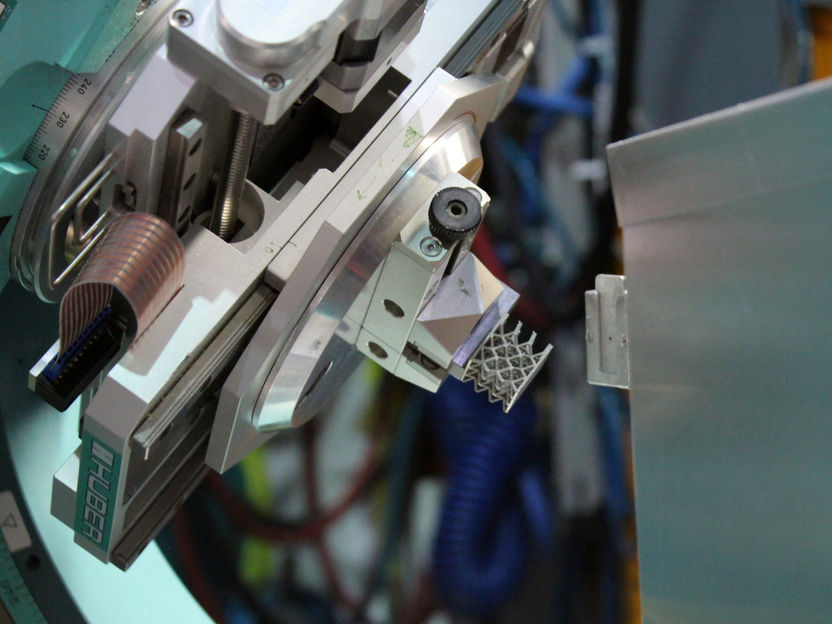Nanometer catalyst cleans up bad cigarette smoke in smoking room
Advertisement
The research team led by Dr. Jongsoo Jurng and Dr. Gwi-Nam at KIST stated that, in cooperation with KT&G, KIST has developed a nano-catalyst filter coated with a manganese oxide-based nano-catalyst, which can be used in a smoking room to reduce and purify major harmful substances of cigarette smoke. the KIST-developed catalyst removes 100% of the particle substances of cigarette smoke, such as nicotine and tar, converting those into water vapor and carbon dioxide. According to the research team, the air cleaning equipment based on the newly-developed catalyst can purify over 80% of the cigarette smoke within 30 minutes and 100% of it within 1 hour in a 30 square meter smoking room, where 10 people are simultaneously smoking
Activated charcoal-based filters have been mostly used in a smoking room to remove gaseous materials in cigarette smoke. However, those filters are not effective in removing gaseous materials such as acetaldehyde, their absorbtion performance decreases fast in a closed facility such as a smoking room, and they need to be replaced at least every other week, which is rather inconvenient.
The research team has developed a nano-catalyst filter by evenly coating a manganese oxide-based (Mn/TiO2)) nano-catalyst powder onto a ceramic-based filter media. The nano-catalyst filter uses a technology that decomposes elements of cigarette smoke using oxygen radical, which is generated by decomposing ozone in the air on the surface of the manganese-oxide-based nano-catalyst filter. An evaluation test with total volatile organic compounds (TVOC), such as acetaldehyde, nicotine and tar, which account for the largest volume of gaseous materials in cigarette smoke, is conducted to evaluate the performance of the newly-developed catalyst. The results show that the new catalyst decomposes over 98% of the aforementioned harmful substances.
For the performance evaluation test, the research team made an air cleaning equipment prototype using the nano-catalyst filter. The equipment was installed in an actual smoking room in the size of 30 square meters (with processing capacity of 4 CMM). About 80% of cigarette smoke elements were processed and decomposed to water vapor and carbon dioxide, within 30 minutes, and 100% of them within 1 hour. The test condition was designed based on the processing capacity which could circulate the air inside the entire 30 square meter smoking room once every 15 minutes.
The research team expected that it would take a year or so to commercialize this technology as the nano-catalyst and the filter coating technologies had been developed already.
The lead researcher Dr. Jurng mentioned that "this research holds a significance since the new air cleaning equipment based on a simple catalyst successfully processes and removes gaseous materials in cigarette smoke, which are not easily removed with the existing air cleaning technologies. If the new equipment can be simplified and is economically feasible, it will be an important tool for keeping smoking room pleasant and clean. Also, from the convergence perspective, the new nanometer catalyst filter can be integrated with other air cleaning products such as air purifiers and air conditioners."
Most read news
Other news from the department science

Get the chemical industry in your inbox
By submitting this form you agree that LUMITOS AG will send you the newsletter(s) selected above by email. Your data will not be passed on to third parties. Your data will be stored and processed in accordance with our data protection regulations. LUMITOS may contact you by email for the purpose of advertising or market and opinion surveys. You can revoke your consent at any time without giving reasons to LUMITOS AG, Ernst-Augustin-Str. 2, 12489 Berlin, Germany or by e-mail at revoke@lumitos.com with effect for the future. In addition, each email contains a link to unsubscribe from the corresponding newsletter.
Most read news
More news from our other portals
Last viewed contents
Carl_Ferdinand_Cori
EPC Contract for an Amine Plant Signed With Aker Clean Carbon AS
NIST gets the dirt on soil with 3 new reference materials
WACKER Further Expands its Production and R&D Capacities in China
TGen scientists uncover new field of research that could help police in crime scene forensics - Resolving individuals contributing trace amounts of DNA to highly complex mixtures using high-density SNP genotyping microarrays
LANXESS acquires PTAP product line - Broadening active ingredient range for disinfectants

Energy-saving gas turbines from the 3D printer - Neutrons "see" internal stress in components from additive manufacturing
Vinnolit zieht zweite Stufe der Chlorkonversion vor - Umrüstung der Elektrolysen in Gendorf und Knapsack auf Membrantechnologie bereits bis Mitte 2009

































































